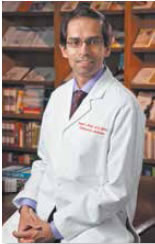
5 timeless habits for better health

What are the symptoms of prostate cancer?

Is your breakfast cereal healthy?

When pain signals an emergency: Symptoms you should never ignore

Does exercise give you energy?

Acupuncture for pain relief: How it works and what to expect

How to avoid jet lag: Tips for staying alert when you travel

Biofeedback therapy: How it works and how it can help relieve pain

Best vitamins and minerals for energy

Should you take probiotics with antibiotics?
Osteoporosis Archive
Articles
IV osteoporosis drug builds bone in older women who can't take the oral version
A study published online April 13, 2015, in JAMA Internal Medicine indicates that a single infusion of the bisphosphonate drug zoledronate (Reclast) can be used to increase bone density in women who can't take oral versions of bisphosphonates. Taking an oral bisphosphonate like alendronate (Fosamax) is effective in building bone for women with osteoporosis, but it requires a commitment—taking the drug on an empty stomach and remaining upright for 30 minutes afterward. Because this may not be practical for women in assisted living facilities, they often aren't given bone-building drugs, even though their risk of hip fracture is eight to nine times that of women living at home.
The researchers studied 181 women with osteoporosis residing in assisted living facilities. The average age was 85. The women were randomly assigned to one of two treatments—1,200 milligrams of calcium and 800 IU of vitamin D daily as supplements plus a single intravenous infusion of zoledronate or the same daily doses of the supplements alone.
Osteoarthritis relief without more pills
It's possible to ease arthritis pain and stiffness without medication, but it takes some work. |
Here are some steps you can take to reduce your reliance on medication to control symptoms and stay functional.
Ask the doctor: Calcium supplements: Not routinely recommended
Dairy products are good sources of calcium. |
Q. My internist told me to take calcium because I have osteoporosis. However, I heard that blockages in heart arteries could also contain calcium. Am I hurting my arteries by taking calcium supplements?
A. Doctors often recommend calcium supplements for people with osteoporosis, and I'd advise you to follow your physician's advice, as calcium is important for bone health. The Recommended Dietary Allowance for calcium for adults is 1,000 to 1,200 milligrams (mg) a day; dairy products are the best sources. For healthy people who get enough calcium in their diets, the role of calcium supplements is less clear, although some people hope that taking them may help preserve bone strength.

5 timeless habits for better health

What are the symptoms of prostate cancer?

Is your breakfast cereal healthy?

When pain signals an emergency: Symptoms you should never ignore

Does exercise give you energy?

Acupuncture for pain relief: How it works and what to expect

How to avoid jet lag: Tips for staying alert when you travel

Biofeedback therapy: How it works and how it can help relieve pain

Best vitamins and minerals for energy

Should you take probiotics with antibiotics?
Free Healthbeat Signup
Get the latest in health news delivered to your inbox!
Sign Up




